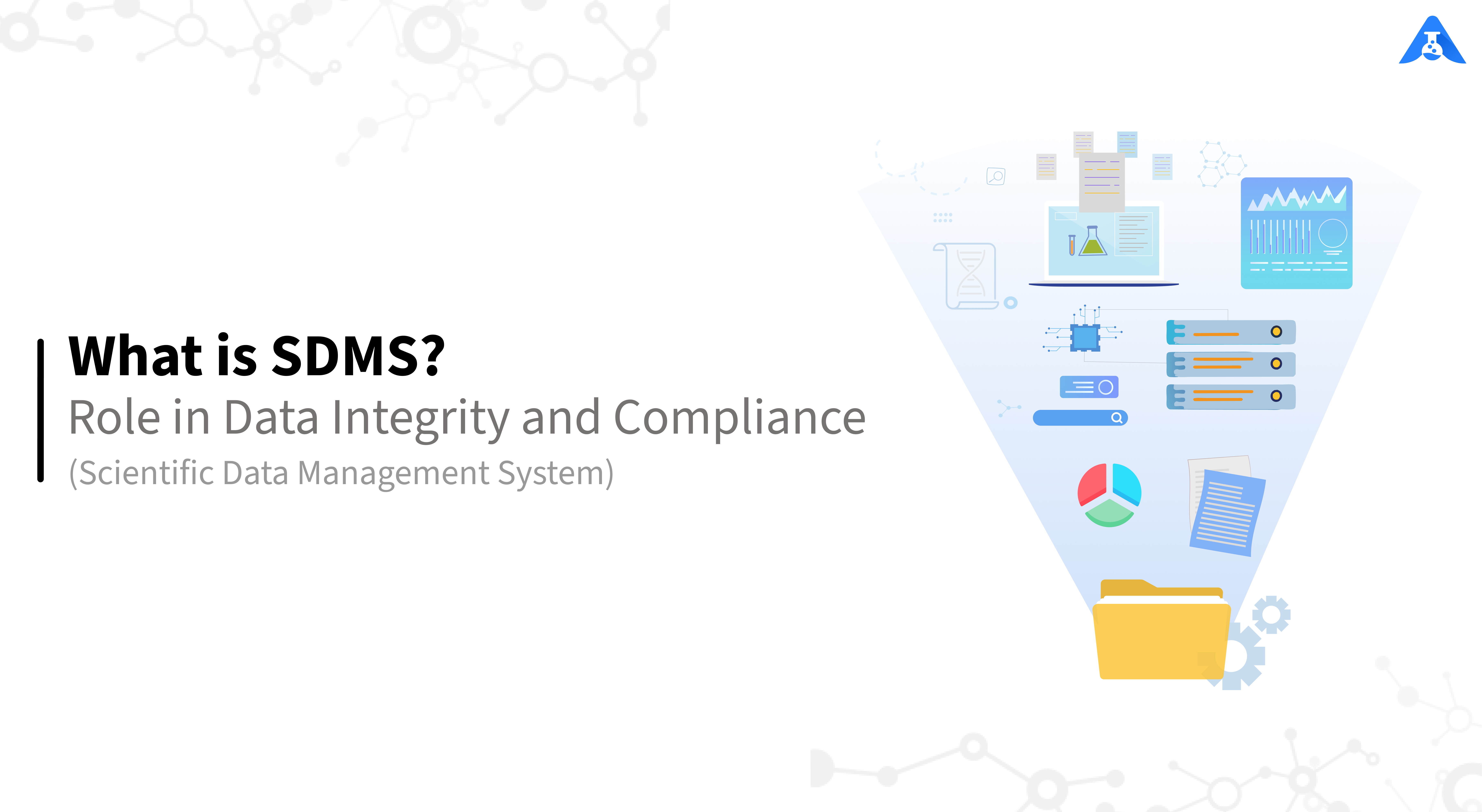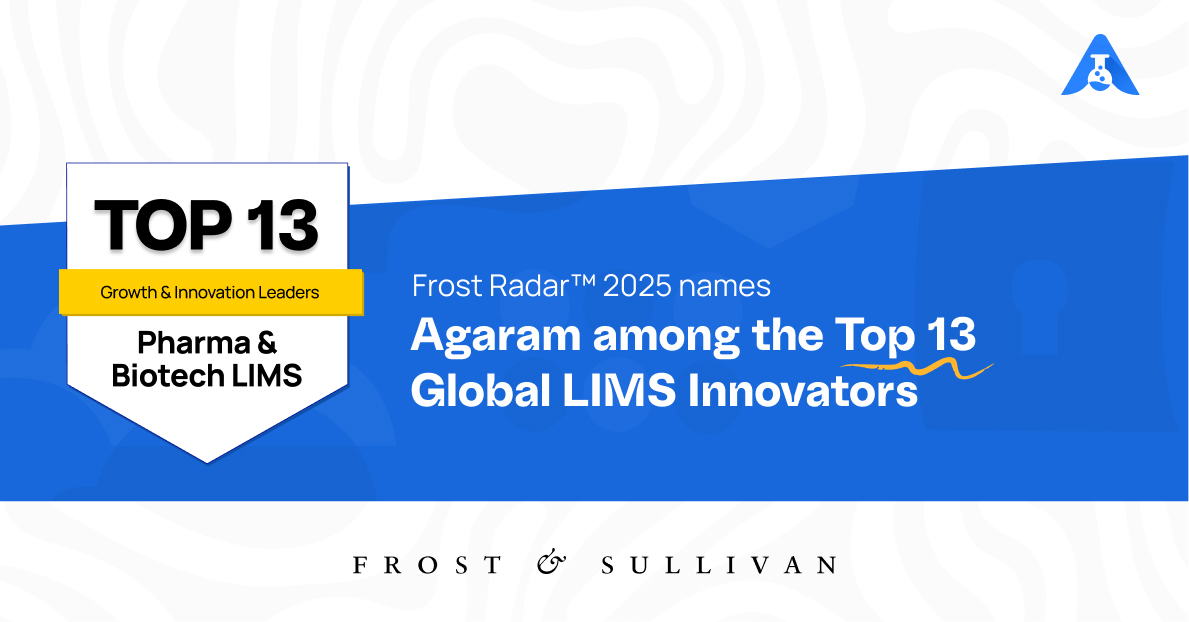What is SDMS – It is Role in Data Integrity and Compliance
Introduction
In the rapidly evolving landscape of scientific research and experimentation, the management of vast amounts of data poses a significant challenge. This is where a Scientific Data Management System (SDMS) steps in, serving as a cornerstone for modern laboratories aiming for efficiency, reliability, and compliance. This writeup delves into the multifaceted aspects of SDMS, providing a comprehensive understanding of its definition, roles, functionality, significance, and advantages, alongside an exploration of data integrity and compliance within the laboratory context.
What is SDMS?
Definition of SDMS
A Scientific Data Management System (SDMS) is a specialized software solution designed to efficiently capture, store, manage, and retrieve vast volumes of scientific data generated from various laboratory instruments and experiments. Unlike generic data management systems, Scientific Data Management System is tailored for the unique requirements of scientific research, ensuring that data from diverse sources is securely managed and easily accessible for analysis, reporting, and decision–making.
 Role of SDMS compared to other systems
Role of SDMS compared to other systems
Scientific Data Management Systems (SDMS), Laboratory Information Management Systems (LIMS), and Electronic Laboratory Notebooks (ELN) are all critical components of the modern laboratory infrastructure, each serving distinct but complementary roles. Understanding the key functionalities and focus areas of Scientific Data Management System in comparison to Laboratory Information Management Systems and Electronic Laboratory Notebooks highlights the unique value it brings to scientific data management and research.
SDMS (Scientific Data Management System)
Key Role: The primary role of an Scientific Data Management System is to capture, manage, and store large volumes of complex scientific data generated from various sources, including instruments and experiments. It focuses on ensuring data integrity, facilitating data sharing and collaboration, and enabling long–term data preservation. An SDMS is designed to handle the complexities of scientific data, including structured and unstructured data, across various disciplines.
LIMS (Laboratory Information Management System)
Key Role: Laboratory Information Management Systems is focused on managing samples, laboratory workflows, and the associated data generated within the laboratory environment. It streamlines lab operations, from sample management to testing and reporting, ensuring efficiency and regulatory compliance.
ELN (Electronic Laboratory Notebook)
Key Role: Electronic Laboratory Notebooks serve as a digital substitute for traditional paper laboratory notebooks. It allows researchers to document experiments, procedures, and observations electronically, supporting collaboration and intellectual property protection.
 Comparison and Synergy
Comparison and Synergy
Focus Area: While Scientific Data Management System (SDMS) focuses on managing the vast amounts of data generated from scientific experiments, Laboratory Information Management System (LIMS) manages the operational aspects of the lab, and Electronic Laboratory Notebooks focuses on documenting the research process.
Data vs. Process vs. Documentation: SDMS is datacentric, LIMS is process–centric, and ELN is documentation–centric, each addressing different needs within the research and laboratory environment.
Complementarity: Although each system has its primary focus, they are complementary. Integrating Scientific Data Management System (SDMS), Laboratory Information Management System (LIMS), and Electronic Laboratory Notebooks (ELN) can provide a comprehensive solution for managing all aspects of laboratory operations, data management, and research documentation, enhancing efficiency, compliance, and innovation in scientific research.
 How Does a SDMS Work?
How Does a SDMS Work?
Core Functionalities of SDMS
The core functionalities of an Scientific Data Management System (SDMS) are essential for ensuring the integrity, accessibility, and usability of scientific data over time. These functionalities can vary depending on the specific requirements of the scientific discipline or research area but generally include the following key components:
Data Capture and Collection
Automated Data Acquisition: Automatically captures data directly from scientific instruments and experiments, reducing manual data entry errors.
Manual Data Entry: Allows for the manual input of data that cannot be automatically captured, ensuring that all relevant data is stored.
Data Management and Storage
Centralized Data Repository: Provides a centralized platform for storing all scientific data in a structured manner, facilitating easy access and management.
Data Versioning: Keeps track of different versions of data files, ensuring that changes are recorded and that previous versions can be retrieved if necessary.
Data Integration and Formatting
Data Standardization: Converts data into standardized formats, making it easier to share and integrate data from different sources or experiments.
Metadata Management: Captures and stores metadata (data about data) to provide context for the data, such as the conditions under which experiments were conducted.
Data Analysis and Visualization
Analytical Tools Integration: Provides integration with analytical and statistical tools to analyze the data, helping researchers to derive insights and make discoveries.
Visualization Tools: Offers visualization tools to help with the interpretation of data, including graphs, charts, and interactive visualizations.
Data Sharing and Dissemination
Access Control: Manages who has access to the data, ensuring that sensitive data is protected while still promoting data sharing among collaborators.
Data Publishing: Facilitates the publishing of data for wider dissemination, making it accessible to other researchers and the public, often in compliance with open data initiatives.
Data Security and Compliance
Security Measures: Implements security measures to protect data integrity and confidentiality, including encryption and secure data transmission protocols.
Regulatory Compliance: Ensures that data management practices comply with legal and regulatory requirements, particularly those relating to data privacy and protection.
Data Preservation and Archiving
Long-Term Preservation: Ensures that data is preserved over the long term, making it possible for future researchers to access and use the data.
Archiving Strategies: Implements strategies for archiving data in a way that maintains its usability and relevance, including the use of sustainable formats and metadata documentation.
 Who is SDMS for?
Who is SDMS for?
Scientific Data Management Systems (SDMS) are designed to cater to a broad spectrum of users across various fields of science and industry. By efficiently managing large volumes of complex data, Scientific Data Management System supports the diverse needs of individuals and organizations engaged in data–intensive scientific research and development. Key users of SDMS include:
Researchers and Scientists
Academic Researchers: In universities and research institutions, who require efficient data management for their experimental data, including storage, retrieval, and sharing capabilities to support their research activities.
Industrial Scientists: Working in R&D departments of industries such as pharmaceuticals, biotechnology, and materials science, where managing experimental data and integrating it with other data sources accelerates product development.
Data Analysts and Bioinformaticians
Professionals who specialize in analyzing complex datasets, such as genomic sequences or chemical compounds, to derive insights. Scientific Data Management System (SDMS) provides them with integrated and standardized datasets that can be readily analyzed using computational tools.
Laboratory Managers and Technicians
Individuals responsible for the operational efficiency of laboratories. They rely on Scientific Data Management System to streamline workflows, ensure data integrity, and maintain compliance with regulatory standards.
Quality Assurance (QA) and Quality Control (QC) Professionals
In industries where maintaining the highest quality standards is crucial, such as pharmaceutical manufacturing. SDMS helps in managing the data related to quality checks, audits, and regulatory submissions.
Regulatory Affairs Specialists
Those who manage the documentation and submission of data to regulatory bodies. Scientific Data Management System (SDMS) assists in ensuring that data is managed in compliance with regulatory requirements and can be easily accessed for audits and inspections.
IT and Data Management Professionals
Those who are responsible for the implementation, maintenance, and security of data management systems. They ensure that the SDMS is optimally configured to meet the specific needs of the organization, including data security and integrity.
Clinical Researchers
Involved in designing, conducting, and managing clinical trials. Scientific Data Management System (SDMS) aids in managing patient data, trial results, and ensuring compliance with regulatory standards such as HIPAA and GCP.
Environmental Scientists
Those who study environmental processes and changes. They use Scientific Data Management System to manage data collected from various sources, including field observations, satellite data, and environmental monitoring instruments.
Educators and Students
In higher education, particularly those involved in research projects, who require access to and management of scientific data as part of their learning and research activities.
Collaborating Research Institutions and Consortia
Groups of researchers from different organizations working together on large-scale research projects. Scientific Data Management System (SDMS) facilitates data sharing and collaboration across institutional boundaries.
Importance of SDMS
The importance of Scientific Data Management Systems (SDMS) spans across various industries, significantly enhancing efficiency, reliability, and innovation. The core functionalities of an SDMS, such as data capture, management, analysis, and sharing, play crucial roles in different sectors. Here is how Scientific Data Management System impacts several key industries:
Pharmaceuticals and Healthcare
Drug Discovery and Development: Scientific Data Management Systems (SDMS) accelerates the drug discovery process by efficiently managing vast amounts of experimental data, facilitating faster analysis and decision-making. This can significantly shorten the time to market for new drugs.
Clinical Trials: Managing clinical trial data with a Scientific Data Management System ensures data integrity, compliance with regulatory standards (like FDA regulations), and improves the efficiency of data analysis and reporting.
Biotechnology
Genomic Research: In genomic research, managing the massive datasets produced by sequencing technologies is a challenge that SDMS addresses, enabling the storage, analysis, and sharing of genomic information with unprecedented efficiency.
Proteomics and Metabolomics: Scientific Data Management Systems (SDMS) supports the integration and analysis of complex datasets in proteomics and metabolomics, facilitating the discovery of new biomarkers and therapeutic targets.
Environmental Sciences
Climate Research: SDMS helps in managing and analyzing largescale environmental datasets, such as climate models and satellite data, aiding in the understanding of climate change and its impacts.
Biodiversity Conservation: By managing data related to species distribution, habitat conditions, and genetic information, Scientific Data Management Systems supports conservation efforts and biodiversity research.
Energy Sector
Renewable Energy Research: Scientific Data Management Systems (SDMS) plays a critical role in managing data from research on renewable energy sources, such as solar and wind power, helping to optimize energy production and efficiency.
Nuclear Energy: In the nuclear industry, SDMS ensures the rigorous management of experimental data, safety records, and compliance documentation, crucial for operational safety and regulatory compliance.
Manufacturing and Engineering
Material Science: Scientific Data Management System aids in the development of new materials by efficiently managing data from material properties tests and simulations, accelerating innovation.
Quality Control: In manufacturing, SDMS systems can manage data from quality control processes, ensuring product consistency and regulatory compliance.
Agriculture
Agronomic Research: Scientific Data Management System (SDMS) facilitates the management of data from field trials, genetic research, and crop modeling, supporting the development of more resilient and productive crop varieties.
Sustainable Practices: By analyzing data on soil health, water usage, and crop yields, SDMS can help in implementing more sustainable and efficient agricultural practices.
Astronomy and Space Exploration
Data from Telescopes and Space Missions: Scientific Data Management System manages the vast amounts of data generated by telescopes and space missions, supporting the analysis and sharing of findings within the scientific community and with the public.
Education and Research
Academic Collaboration: SDMS enables researchers from different disciplines and institutions to share and collaborate on data, fostering multidisciplinary research and innovation.
Advantages of Using a SDMS
The adoption of Scientific Data Management Systems (SDMS) brings a myriad of advantages to organizations and individuals involved in scientific research and development. These benefits span operational efficiencies, data integrity, compliance, and fostering innovation. Here are some of the key advantages of using an SDMS:
Enhanced Data Integrity and Security
SDMS ensures the accuracy, completeness, and consistency of data throughout its lifecycle. It employs advanced security protocols to protect sensitive data against unauthorized access, loss, or corruption.
Improved Data Accessibility and Sharing
By centralizing data storage, Scientific Data Management System (SDMS) makes it easier for authorized users to access and share data within and across organizational boundaries. This fosters collaboration among researchers and accelerates the pace of scientific discovery.
Increased Efficiency and Productivity
Automating the capture, storage, and management of data significantly reduces manual data entry and associated errors. This streamlining of processes allows scientists and researchers to focus more on their core research activities, thus boosting productivity.
Better Data Analysis and Visualization
Scientific Data Management System (SDMS) often integrates with analytical and visualization tools, enabling users to derive insights from data more effectively. This capability supports more informed decision–making and the generation of new hypotheses.
Regulatory Compliance
With the increasing emphasis on regulatory compliance in many scientific fields, Scientific Data Management System helps organizations adhere to industry standards and legal requirements by maintaining thorough records, audit trails, and data integrity. This is particularly crucial in industries such as pharmaceuticals, biotechnology, and healthcare.
Data Standardization and Interoperability
Scientific Data Management System (SDMS) promotes the standardization of data formats and protocols, which is essential for interoperability among different systems and tools. This standardization facilitates the integration of data from diverse sources, enhancing the potential for comprehensive analyses.
Long–term Data Preservation
Scientific data is an invaluable asset that may retain its value for decades. SDMS provides mechanisms for the long–term preservation of data, ensuring that future researchers can access and utilize past datasets for new research.
Scalability
As research operations expand and generate more data, Scientific Data Management System can scale to meet growing data storage and management needs. This scalability ensures that the system remains efficient and effective over time, regardless of the volume of data.
Cost Savings
By improving efficiency, reducing errors, and automating routine tasks, SDMS can lead to significant cost savings. These savings arise from reduced time and resources spent on data management as well as from avoiding the costs associated with data loss or compliance violations.
Supports Innovation
By efficiently managing the data lifecycle and enabling sophisticated data analysis, Scientific Data Management System (SDMS) supports the generation of new knowledge and innovation. This can lead to the discovery of new drugs, materials, and technologies, driving progress in various fields.
Features of a Good SDMS
A good Scientific Data Management System (SDMS) incorporates a suite of features designed to optimize the handling, security, and utilization of scientific data across various domains. When evaluating an SDMS, several key features stand out as essential for meeting the comprehensive needs of scientific research and development. Here are some of the most important features:
Robust Data Capture and Integration
- Capable of automatically capturing data directly from a wide range of scientific instruments and experiments.
- Supports the integration of data from diverse sources, including external databases, electronic laboratory notebooks (ELNs), and laboratory information management systems (LIMS).
Flexible Data Storage and Organization
- Offers secure, scalable storage solutions that can handle large volumes of data.
- Provides a structured way to organize data, including the use of metadata, to facilitate easy search and retrieval.
Data Standardization and Interoperability
- Ensures that data is stored in standardized formats, promoting interoperability with other systems and tools.
- Supports widely used standards and protocols to facilitate data exchange and integration.
Comprehensive Metadata Management
- Captures detailed metadata for all data, ensuring that context, provenance, and experimental conditions are well documented.
- Allows for the customization of metadata fields to suit the specific needs of different scientific disciplines.
Advanced Data Security and Compliance
- Implements robust security measures, including encryption and secure access controls, to protect sensitive data.
- Facilitates compliance with regulatory standards and guidelines specific to different industries (e.g., FDA regulations for pharmaceuticals, GDPR for data protection).
Efficient Data Access and Sharing
- Provides user-friendly interfaces and tools for easy data access and sharing among authorized users.
- Supports collaborative research efforts by facilitating the controlled sharing of data across organizational boundaries.
Powerful Data Analysis and Visualization Tools
- Integrates with or provides built-in data analysis and visualization tools, enabling users to derive insights directly within the system.
- Supports the use of advanced analytical methodologies, including AI and machine learning, for data analysis.
Comprehensive Data Backup and Recovery
- Implements automatic data backup and recovery procedures to prevent data loss and ensure data integrity.
- Offers version control features to track changes and revert to previous versions of data when necessary.
Customization and Scalability
- Can be customized to meet the specific needs and workflows of different research environments.
- Scalable to accommodate growing data volumes and evolving research requirements.
User Management and Access Controls
- Provides detailed access control mechanisms to manage user permissions, ensuring that individuals can only access data relevant to their role.
- Supports the management of user roles and responsibilities within the system, enhancing data governance
Audit Trails and Regulatory Compliance
- Automatically records detailed audit trails for all data and system interactions, supporting traceability and accountability.
- Helps organizations maintain compliance with industry-specific regulatory requirements related to data management.
Data Integrity & SDMS
Data integrity is fundamental to the reliability, trustworthiness, and reproducibility of scientific research. In the context of laboratory and research environments, data integrity refers to the accuracy and consistency of data throughout its lifecycle, from collection and storage to retrieval and analysis.
Definition of Data Integrity
Data integrity is guided by the ALCOA principles, which stand for:
Attributable: Data should be traceable to the person who generated it.
Legible: Data must be recorded permanently in a readable and understandable manner.
Contemporaneous: Data should be recorded at the time the work is performed.
Original: The first recording of data, also known as the source data, should always be preserved.
Accurate: Data must be correct, truthful, and reflect what was done or observed.
These principles are designed to ensure the quality and reliability of data, which are critical for making informed scientific decisions, ensuring public safety, and maintaining trust in scientific findings.
Challenges to Maintaining Data Integrity
Maintaining data integrity faces several challenges, including:
Human Error: Manual data entry or transcription errors.
Data Tampering: Intentional alteration or destruction of data.
Technology Failures: Loss of data due to hardware failures or software bugs.
Lack of Standardization: Difficulty in integrating and comparing data from different sources.
Regulatory Compliance: Evolving regulations that require rigorous data management practices.
Benefits of Maintaining Data Integrity
Ensuring data integrity offers numerous benefits, such as:
Trustworthiness of Data: Reliable data underpins accurate scientific conclusions.
Regulatory Compliance: Meets the standards set by regulatory bodies, avoiding legal penalties.
Efficiency in Research: Saves time and resources by reducing the need for data reentry or corrections.
Enhanced Collaboration: Facilitates data sharing and reuse among researchers and institutions.
 Role of SDMS in Ensuring Data Integrity
Role of SDMS in Ensuring Data Integrity
Scientific Data Management System (SDMS) plays a pivotal role in maintaining data integrity by addressing these challenges and leveraging the benefits.
Compliances with Regulations
SDMS helps laboratories meet regulatory requirements by:
- Functional Requirements for Compliance & Data Integrity: Implementing features that ensure data is captured and maintained according to the ALCOA principles.
- Relevant Regulations & Standards: Facilitating compliance with various standards and regulations, such as FDA’s 21 CFR Part 11, EU’s Annex 11, and ISO/IEC 17025.
Going Paperless Solution
Transitioning to a paperless laboratory with an Scientific Data Management System (SDMS):
- Reduces Human Error: By automating data capture and reducing manual data entry.
- Ensures Data Traceability: Electronic records are more easily tracked and audited.
- Improves Data Accessibility: Data can be accessed remotely, enhancing collaboration.
Seamlessly Integrate with ELN & LIMS
Integration with Electronic Laboratory Notebooks (ELN) and Laboratory Information Management System (LIMS) ensures:
- Consolidated Data Management: Centralizes data management and enhances data flow between systems.
- Standardization: Facilitates the use of standardized data formats and protocols.
- Comprehensive Data Integrity: Maintains the integrity of data across different stages of its lifecycle.
Integrate with Any Type of Instruments
Scientific Data Management System (SDMS) can:
- Automate Data Capture: Directly from instruments to reduce transcription errors.
- Ensure Originality and Accuracy: Capturing data directly from the source ensures it is original and accurate.
- Enhance Data Analysis: Immediate and accurate data capture supports timely and reliable analysis.
Conclusion
The implementation of a Scientific Data Management System (SDMS) represents a transformative step for laboratories aiming to navigate the complexities of modern scientific research. By offering a robust framework for data integrity, regulatory compliance, and operational efficiency, SDMS not only enhances the quality and reliability of scientific data but also paves the way for innovative discoveries and advancements. As the scientific community continues to evolve, the role of Scientific Data Management System in ensuring the seamless management of scientific data becomes increasingly indispensable, marking it as a fundamental component of the digital laboratory ecosystem.





